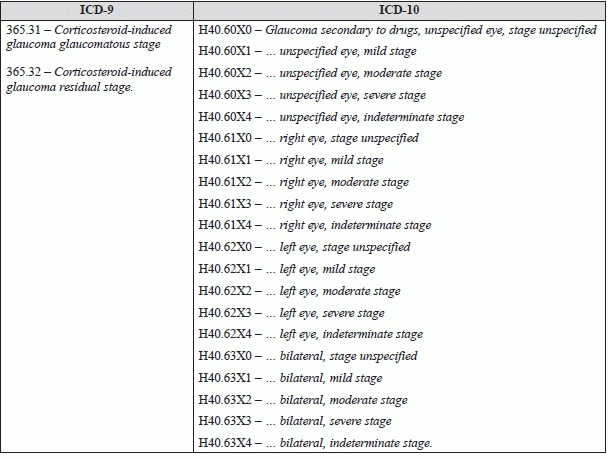H40.6 Family Holds Key to Corticosteroid-Induced Glaucoma
The last issue of Ophthalmology Coding Alert reviewed some of the changes coming to the glaucoma diagnosis codes under the ICD-10 system, coming Oct. 1, 2015 (“Close In on New Dx Codes for Primary Angle-Closure Glaucoma,” Vol. 18, No. 5). The ICD-9 codes for corticosteroid-induced glaucoma will also look much different from their ICD-10 counterparts – and for many of the same reasons.
Like many of the primary angle-closure glaucoma codes (H40.2---), the ICD-10 codes for corticosteroid-induced glaucoma are seven characters long:
Characters 1-3: Category of the disease. For this code series, H40 describes “glaucoma.”
Character 4: The kind of glaucoma. The fourth character “6” in this series describes “secondary to drugs.”
Character 5: Which eye the condition appears in. “0” = “unspecified,” “1” = “right,” “2”= “left,” and “3” = “bilateral.
Character 6: In the corticosteroid-induced glaucoma codes, the sixth character “X” is simply a placeholder to allow for possible future information to be included in the codes.
Character 7: Stage of the disease. “1” = “mild,” “2” = “moderate,” “3” = “severe,” and “4” = “indeterminate.”
With this additional information, the ICD-9 codes 365.31 (Corticosteroid-induced glaucoma glaucomatous stage) and 365.32 (Corticosteroid-induced glaucoma residual stage) will expand to 20 codes, as seen below. However, the diagnosis codes will no longer distinguish between the glaucomatous and residual stages.


